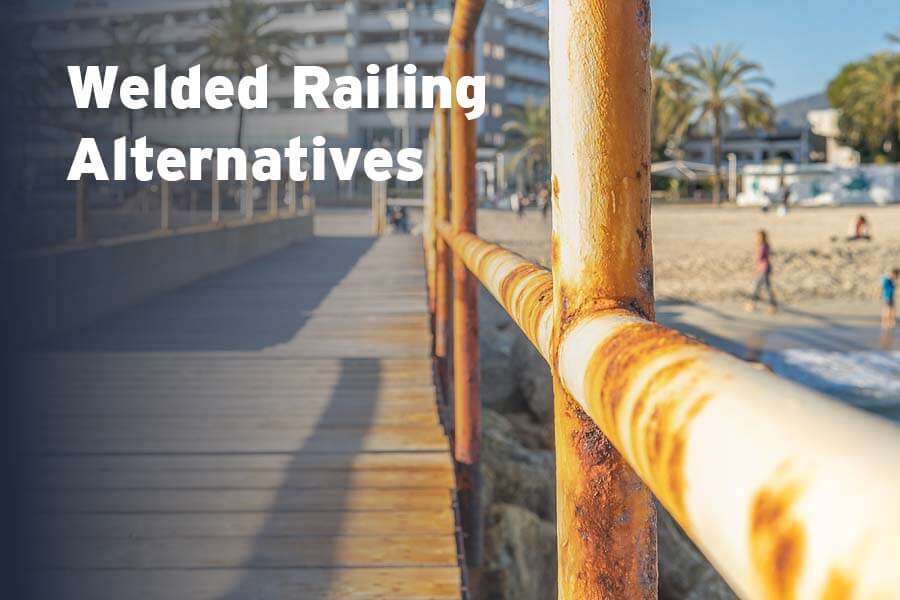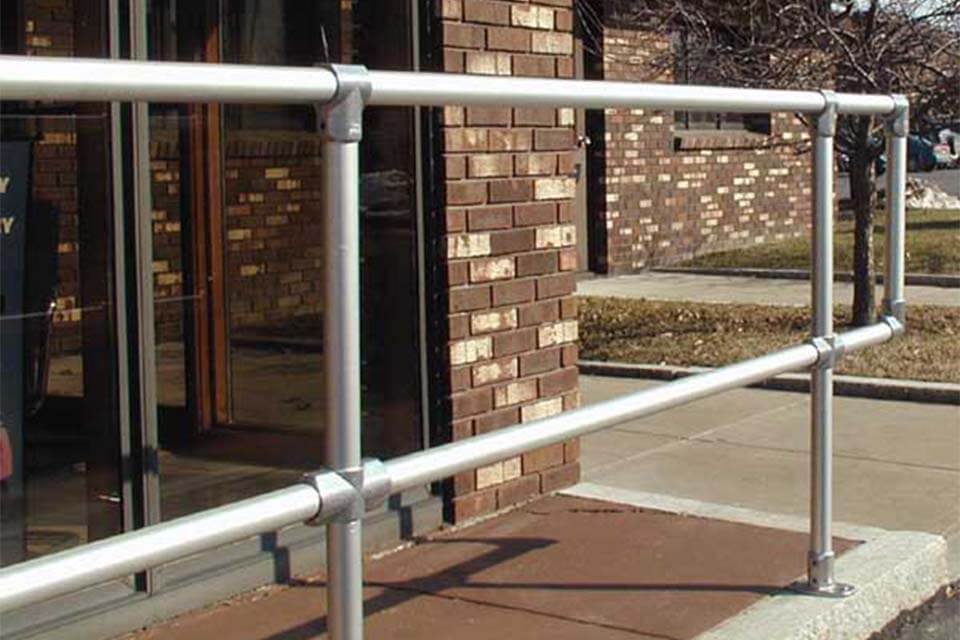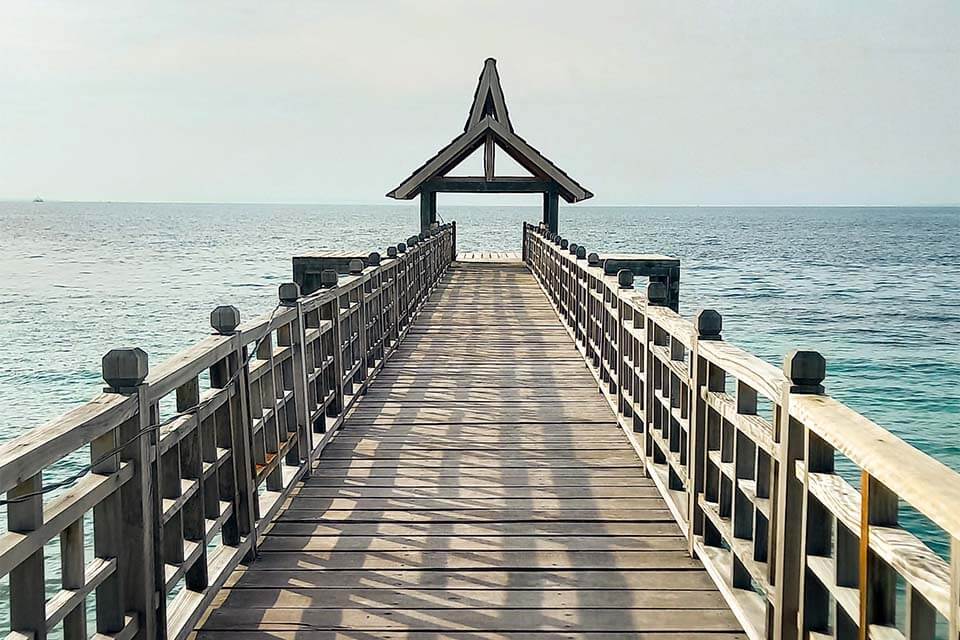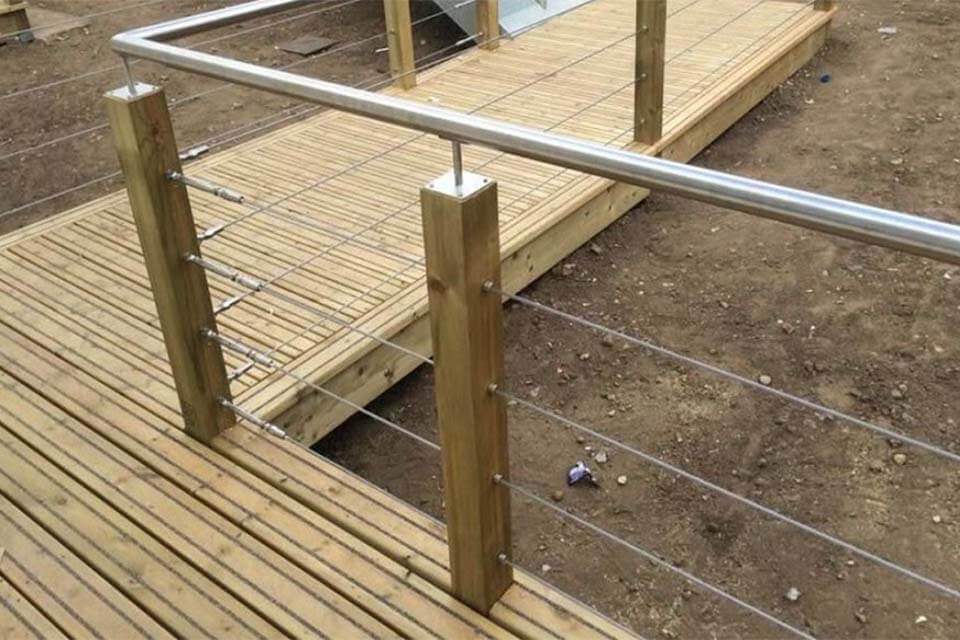3 Alternatives to a Welded Railing

Have you ever looked at a rusty welded steel railing and thought, “I bet I could break that if I pushed on it”?
I know I have. I've seen this with guardrails on loading docks to pedestrian railings along canal paths.
Corroded guardrails can give someone a false sense of security. Your employee is walking along the dock, they take a break and lean against the railing, and then, SNAP!
Not only is the worker falling at a dangerous height (4 feet is certainly dangerous), but they are also falling with a pointy and rusty pipe.
A lot of these breaks occur because the welding removes the natural protective barrier on the steel. This, coupled with stress on the metal from the welding process, will cause these areas to rust faster.
So, what do you do?
You can try to fix the railing. You’ll need specialized labor from a welder, a hot work permit, and inspections once the work is complete. All of this is to add the same style of railing that just failed you. Are you pinching the bridge of your nose yet?
There are other options available to you that don’t require a welder. You can build a railing with wood, steel cable, or pipe and fittings.
I’ll go over some pros and cons of each of these to help you decide which is best for you
Modular Pipe and Fittings for Railing

A Kee Klamp based railing gives you the look of a new welded steel railing but lasts much longer and doesn’t require a hot work permit to install. As a matter of fact, it doesn’t require any specialized labor to install.
The galvanized steel fittings use set screws to clamp onto galvanized pipe. This means that you are breaking the protective coating on the railing. You don’t have to spray galvanize the joints hoping to get just a little more time out of the railing.
There are a lot of fittings available that will allow you to design the guardrail that you want, which you can do on your own or with some expert help.
It’s easy to fix if it’s damaged as well. Just pick out the fitting or two that need to be replaced and it will show up on your door days later for the work to be done. Or loosen the set screws to remove the damaged pipe and insert the new length of pipe. Voila! Easy as pie.
You can design the railing to meet OSHA, ADA, and IBC standards (IBC is what most local building codes are modeled after).
Okay, so what’s the drawback?
Component-based steel railings are more expensive upfront than some of these other options. However, they are easier to maintain and last a long longer.
Pros
- Rust-resistant protective coatings
- No skilled labor required
- Able to be installed and repaired with basic hand tools
- Easy to adapt to OSHA, ADA, and IBC standards
Cons
- Upfront cost is more than other solutions
- Available online, but not in your typical big box store
Railing Constructed from Wood

Installing a railing using wood is one of the first things I used to think of when a guardrail was needed. It’s so easy to go to the local lumber yard or big box store to get what you need.
The best thing about using wood is how readily available it tends to be. It’s also versatile and malleable. YouTube is full of videos showing you all the different ways that you customize, design, join, and a plethora of other ideas on using wood for construction.
Wood railing can be very attractive with built correctly. The different styles of balusters and plethora of stains available are just a few ways that this is true.
Wood railing is also easy to fix. A saw, some screws, and some more wood and you’ve got yourself a recipe for a fixed guardrail.
There are some very important setbacks to using wood for your guardrail that you’ll want to consider.
Wood rots. Yeah, I know, your mind is blown. Regardless of how obvious this is, it’s important to consider why this matters to you. Think about pushing that rusty welded-steel railing that snaps. The same can happen here.
Wood can warp, fade, split and twist over time. Mold can grow on wood, as well.
Replacing wood railing is easy, but how often do you want to replace or fix your railing?
Then, there’s the look. Wood railing can look amazing...if the person installing has the skill.
You don’t need specialized labor to install wood railing, but the quality of the railing and the appearance of your railing is going to heavily be dependent on the skill of the person who installs it.
Also, code is an issue. If you want a wood railing to meet code requirements, then you’ll need a skilled worker and an engineer to determine that the railing is compliant as built.
That being said, it is easy to add an ADA-compliant handrail to an existing wooden railing.
While our focus is on modular pipe and fittings, Dengarden has a helpful guide on how to build a wood railing.
Pros
- Easy to source material
- Highly customizable
- Lots of wood types, styles, and stains available
Cons
- Quality and Aesthetics are dependent on installer
- Warps, splits, and twists
- Susceptible to rot
- Need skilled labor and engineer to ensure code compliance
Steel Cable for Railing

Steel cable railing is typically formed from stainless steel wire ropes that connect to a post made of metal, wood, or vinyl. They require a top rail for stability.
This can be a customizable system that can bring a unique aesthetic to your railing. There are a lot of buckle and tensioner styles to give you a choice in your preferred aesthetic.
The fact that the steel comes in a spool will give the installation a lot of flexibility.
It is easier to replace than welded steel railing, but that is where the benefits end. Installing a cable railing may not be too difficult with the right parts, but it is time intensive.
The width of the cable will require more horizontal rails in order to be compliant.
This isn’t as much of an issue if you need to comply with the local building code because most local codes require no more than a 4-inch gap in your railing. This means that you’ll need more horizontal rails anyway.
Also, regular maintenance will be required for the cable railing to preserve its tensile strength. Cables fray and can cause a hazard to those who come in contact with them. Loose cables will not comply with OSHA’s safety standards and are a hazard.
Viewrail can show you how to install a cable railing if you decide that this is the right solution for you.
Pros
- No specialized labor required
- Simple Installation process – any handyman can install
- Can be customized to fit your space
- Is part of the new “modern” look of industrial railing
Cons
- Time intensive and monotonous installation process
- Needs regular maintenance to tight cables
- Cables may need regular replacement
- Costs vary greatly depending on the style you choose
Wrapping Up
The component guardrail system is as strong as a welded rail, as customizable as a wooden rail, and as easy to install as a cable railing (though much faster than a cable railing).
How many times have you resorted to the “cost-saving” option to just have to buy that same option over and over again? Imagine if you purchased the better-quality item in the first place. How much time and aggravation would you have saved yourself?
Go to our guide to learn how to build your own railing, pick out the parts you need if you already know how, or connect with one of our experts to help you design the railing you need.
We look forward to working with you and would love to see pictures of your finished railing!



